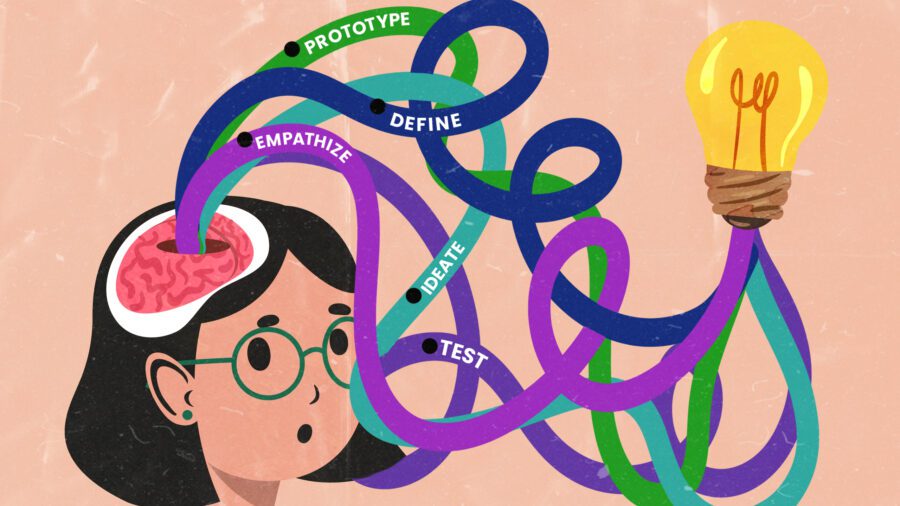
15 Tips for Mastering Your Screen Time for Maximum Productivity and Zero Burnout
“If you are working on something exciting that you really care about, you don’t have to be pushed. The vision pulls you.” – Steve Jobs
Three years ago, the idea that a large number of people would be effectively working from home seemed far-fetched. Up until then, we had all become accustomed to the steady pace of commuting to the office every day, working for eight hours, and coming home.
For many people, this work-life was stressful. There were constant distractions in the office, long hours, overbearing bosses, and difficult coworkers which all extracted a toll on our overall mental health. Though most people were used to this lifestyle, there were many aspects of it that caused distress and negative effects on our health. However, a drastic change to the workforce was on the horizon.
When the pandemic arrived, everyone adjusted to a new mode of working while in the comfort of their own home. At first, this was a universally positive thing. Who wouldn’t want to do their job at their own desk in their own house?
However, many of us soon realized that despite the many positive benefits of working from home, drawbacks began to surface as time went on. Burnout quickly became a huge concern, as many individuals had trouble navigating the boundaries between personal life and work. When you have the luxury of working from your own home, it can be hard to draw boundaries as to when it’s time to set aside work and enjoy your free time and when it’s time to work.
Staring at a screen for 8 hours a day is a lot to ask already, let alone coupled with the plethora of screens we are faced with just in our daily lives. You finish work on your computer and go straight to another screen for a source of entertainment. Though there’s nothing inherently wrong with technology or screens by themselves, it’s important to have the tools you need to avoid workplace burnout when you work from home, and limiting your screen time is a great way to do that.
This is precisely why we’ve put together this article. Here, you’ll find a comprehensive list of 15 tips for mastering your screen time to achieve maximum productivity and zero burnout. Let’s get into it!
Let’s Talk About Workplace Burnout Statistics
Burnout in the workplace is not new, but it has become a global concern — referred to by some as “the great exhaustion.” Nonetheless, workplace burnout increased during the pandemic, particularly in industries that remained operational, like retail, manufacturing, and healthcare.
Back in 2020, global workplace burnout hit an all-time high due to the coronavirus epidemic. Forty-three percent of individuals from over 100 countries reported experiencing occupational burnout, up from 39 percent in 2019. Thirty-six percent of employees report that their firms have no measures in place to prevent employee burnout. Additionally, burnout syndrome accounts for eight percent of all occurrences of occupational illness.
Seventy-five percent of workers have experienced burnout, with 40 percent of those claiming to have had it during the pandemic. Also, sixty-seven percent of all workers say that burnout has gotten worse since the beginning of the pandemic, and 83 percent of employees report that work-based fatigue can harm personal relationships.
In the era following the coronavirus outbreak, a record number of employees work from home. In fact, there are currently three times as many remote employment jobs as there were in 2020. However, the effects of COVID-19 on remote work burnout have been astounding. Today, 69 percent of remote workers suffer from burnout.
Fifty-three percent of virtual or work-from-home employees are now putting in longer hours than they did in the office, and nearly one-third report working “far more” than they did before the outbreak.
And those long hours are accompanied by a lack of the typical support that workers used to have in the office. Forty-eight percent of home-based workers report a lack of emotional support compared to being in an office, 38 percent of remote workers experience burnout due to management pressure to work longer hours, and 21 percent feel there is a tie between pressure from management and pressure from customers or clients.
A staggering 86 percent of remote employees have reported extreme fatigue, and 35 percent of home-based employees think they participate in too many virtual meetings each week.
Extended periods of working from home can also have a negative impact on our ability to unwind and connect with others. Sixty-one percent of remote workers now find it more challenging to “disconnect” from work during non-work hours, and changing from a full-time office job to full-time remote work increases loneliness by 67 percent.
It’s hard to argue with the number of statistics being published about workplace burnout, especially when it concerns the switch to home-based working. However, this is all still a learning process for many business owners and employees alike. Many are still trying to figure out what method works best for them, so don’t get discouraged by thinking you’re doomed to be burnt out forever.
Instead, let’s shift our focus to some insightful tips you can implement to help you avoid burnout and stay productive while working from home.
Join In 200 Million+ On The Journey to Greatness
1. Give Yourself a Break
Maintaining good health should always be your top priority. Burnout from working at home can be managed by taking a break from time to time. This could be doing something as simple as stepping away from your computer and taking a walk outside or spending time with close friends and family. A break from work may be just what you need to recharge and get back to it with renewed vigor.
Working from home has the potential to be very productive, but it may also backfire if you put too much pressure on yourself. If you’re lucky enough to be able to work remotely, you might find yourself with unexpected free time during the day, but that doesn’t mean you have to fill all of that free time with work. When you’re feeling too stressed out to get anything done, it’s time to take a break.
2. Exercise
The prevention of burnout is just one of the many advantages of regular exercise. Making time for exercise has several benefits in addition to getting away from your screen, including improved mood, energy, and productivity. Because of the endorphins released during exercise, you’ll be able to think more clearly and get more done.
There is more flexibility in your schedule when you work from home. Instead of filling every minute with screen time, you should use that time wisely by getting some exercise or other useful activity in. This movement can help you let go of whatever tension you may be feeling as a result of your job.
3. Dedicate Time to Your Hobbies
When you have some free time, use it to better yourself. One way to do this is to take a break from screens and engage in a relaxing activity, such as reading a book or listening to music. If you aren’t quite sure what hobbies you may enjoy pursuing, now is the time to get out there and try new things! You never know what may pique your interest!
If you work from home and are feeling burned out, finding a pastime or interest outside of the house can be a lifesaver. Distract yourself with something else once you’ve finished your task for the day. This distraction allows you to unwind and enjoy some downtime, and as an added bonus, anxiety can also be alleviated by devoting one’s time and energy to activities that bring them joy.
4. Set a Routine
Developing regular habits at work can help you avoid spending too much time staring at your computer. It’s much simpler to juggle tasks and commitments when your day is well-planned. If you schedule your day in advance, you can avoid overscheduling and get everything done that’s important to you.
5. Set Boundaries
It’s important for remote workers to establish limits on their work time, so they don’t get burned out from staying at home all day. This requires you to let your colleagues and clients know when you will and will not be accessible. Never offer your services outside of normal business hours, both to other coworkers and customers. Even though you’re working from home, that doesn’t mean you can’t control your own valuable time and energy.
6. Avoid Looking at Screens When You’re Bored
Have you ever become disinterested in a TV show and switched to checking your email on your phone or tablet instead? Have you ever reached a roadblock on a work project and taken a break to browse the Internet? Are you trying to get relief from your distress by using social media?
Consider whether or not staring at a screen will genuinely make you feel more involved or better. Whether you don’t know the answer or you’re not sure if it is yes, think about ways to take a break that doesn’t include using a device. The best thing you can do for yourself in that moment is to go for a walk around the block, put on some music, or do some grounding meditation.
7. Take a Break from Your Screens to Grab a Healthy Snack
Eating well can help you stay productive while working from home, which is just one of the numerous advantages. In order to have better stamina and mental clarity, it’s important to eat well and make wise decisions that will help you in the long run and put your health first.
While working from home has numerous advantages, it also has its cons, such as the temptation to eat junk food. In order to avoid being mentally and physically exhausted at work, it is important to maintain a balanced diet. Eating well will keep you alert and productive for longer periods of time, and your body will thank you!
8. Keep Track of Your Screen Time
Screen time tracking and management apps are now widely available for smartphones, allowing users to monitor their time spent on various apps and make adjustments as needed, such as limiting the amount of time spent on social media. If you specify a time limit, your computer or smartphone will alert you when it has been reached.
To regain control of your screen time, you may simply need to keep track of how much time you spend using electronic devices outside of work and replace that time with offline activities.
9. Go Old School When You Can
Zoom meetings are one example of a screen-intensive task that can also cause eye strain. However, there are methods to reduce the time spent peering into tiny boxes at one’s coworkers. Instead of repeatedly holding Zoom sessions to train different coworkers on the same procedure or technology, perhaps you could conduct meetings over the phone or film a training video.
Planning your day, drafting a letter, article, presentation, or drawing out a design are all activities that lend themselves well to the use of a pen and paper. Walking, doodling, writing, and even taking a shower can all be great times to come up with ideas, whether you work in a creative field or are simply attempting to solve an issue.
10. Manage Your News Consumption
Do you remember when staying up to date on current events required nothing more than a morning paper and an evening news broadcast? With news cycles that never end and social media sites that seem to refresh every millisecond, it’s easy to feel compelled to constantly refresh our feeds.
Instead, set aside specific hours each day to read the headlines in order to keep you from falling down a never-ending rabbit hole of news. You should also avoid the anxiety-inducing practice of “doomscrolling” at all costs.
11. One Screen at a Time
Sticking to one device at a time whenever feasible will help you avoid burnout tremendously, especially when it comes to your brain and central nervous system, which are more stimulated by numerous screens at once than a single screen.
You may believe that engaging in numerous distractions at once will help you relax, but this is not the case. Pick one screen-based activity to concentrate on rather than switching back and forth between both, such as texting while working or checking your phone while watching TV.
12. Find New Ways to Stimulate Your Senses
We now primarily use screens as a means of entertainment. We have become accustomed to that burst of dopamine that comes from using our smartphones, so we use them constantly.
Instead of solely relying on visual stimulation to get that influx of happy feelings, try to stimulate the sensations of touch and smell. Candles and a slow cooker can be used to create a cozy atmosphere and a delicious supper at the end of the day. Reduce your need for the dopamine rush from screens by engaging other senses as much as possible.
13. Assess Your Biggest Distractions
Ever hear the saying, “If you can’t measure it, you can’t manage it”? It’s the same with your bank account, your weight, and your screen time. Screen Time on iOS and Digital Wellbeing on Samsung smartphones make it simple to keep track of how much time you spend using your device, but you can also find apps that limit your screen time. A program like RescueTime can help you identify and eliminate time-wasting interruptions and remain productive.
14. Set Strict No-Screen Hours
You might want to limit device use during business hours, but if that’s too challenging, you could simply avoid screen usage after a certain time of day. Plan some time for yourself each night, preferably at least an hour before bedtime, when you won’t be using any electronic devices.
15. Be Kind To Yourself
Working from home means you probably won’t be able to avoid all screen time, especially if your meetings are held through video or if you use your breaks to catch up on the news instead of chatting with a coworker over coffee. In addition to spending more time in front of screens for work-related reasons, screens are also how we primarily interact with others, consume media, and acquire necessities and luxuries.
You shouldn’t be hard on yourself. While it’s admirable to try to limit your screen time, you should be gentle with yourself if your efforts fall short.
Even Through Burnout, Greatness is Attainable
These days, we use our computers and mobile devices for more than just work; we use them to stay in touch with friends and family, expand our education, and even keep up with our fitness routines. We all spend too much time in front of screens because we rely on them to fulfill the vast majority of our requirements.
It is crucial that we actively seek alternatives and use technology more consciously to avoid the physical and psychological repercussions of too much screen time and to construct a richer life in the process. By following the tips provided in this article, you’ll be on your way to doing just that!
Greatness Authors
Greatness Authors is a collection of writers, thinkers, curiosity experts, and students of the world who are committed to bringing you the most up-to-date, impactful, and inspiring information surrounding Greatness topics.

Redefining Poetry: How Instagram Sensation Rupi Kaur Showed That Poetry Is for Everyone

The Young Professional’s Guide to Advocating for Yourself at Work & Setting Healthy Boundaries

Olympian Yusra Mardini’s Incredible Story of Resilience, Rescue, and Refugee Rights

A Beginner’s Guide to Effortlessly Attracting Money and Growth Opportunities

Psychologist Edith Eger’s Inspirational Journey to Find Forgiveness and What It Means for You










